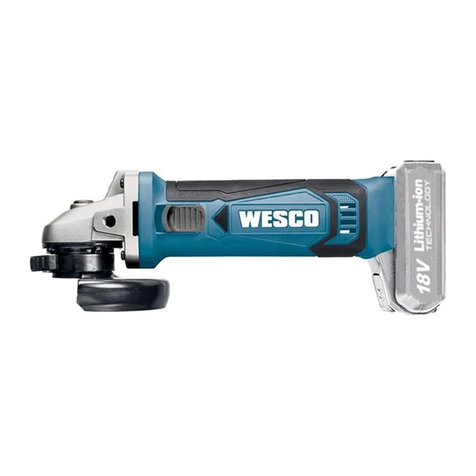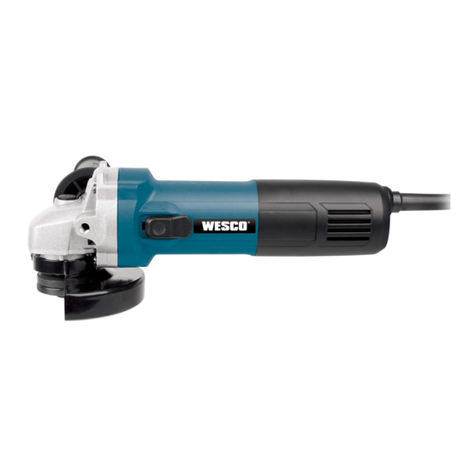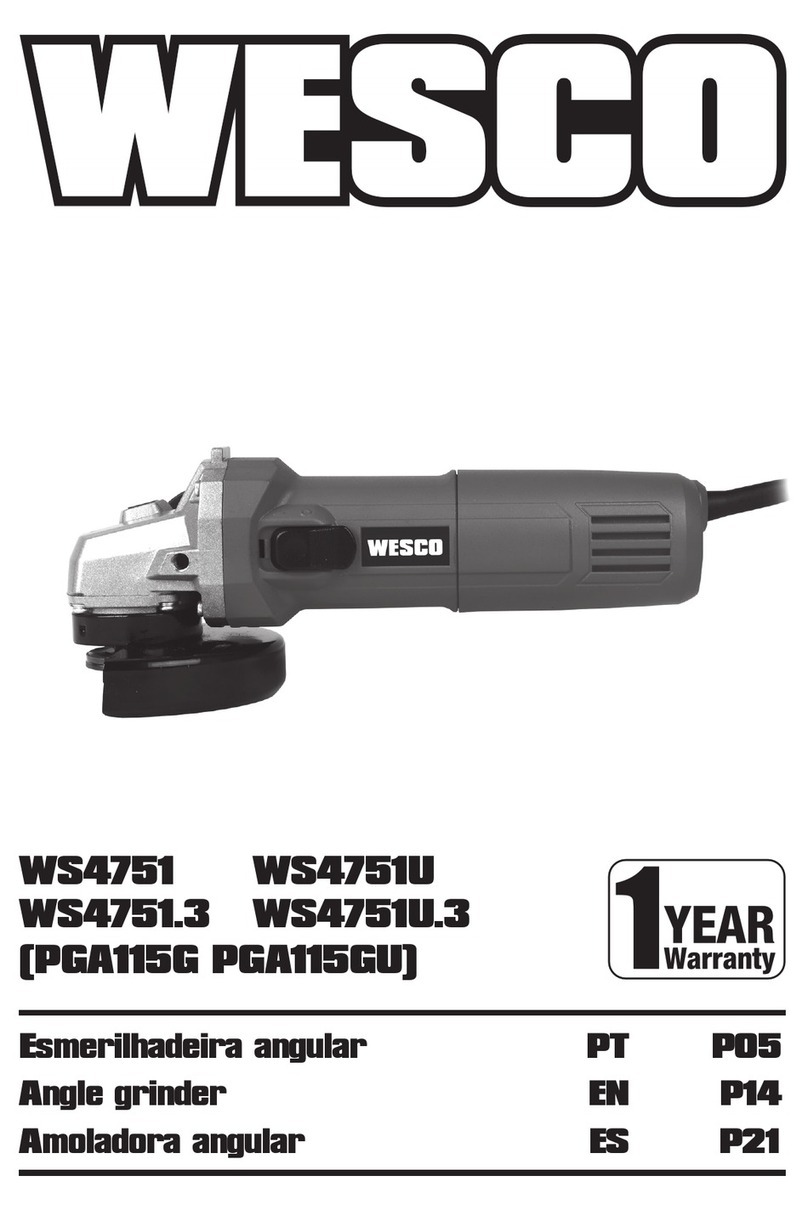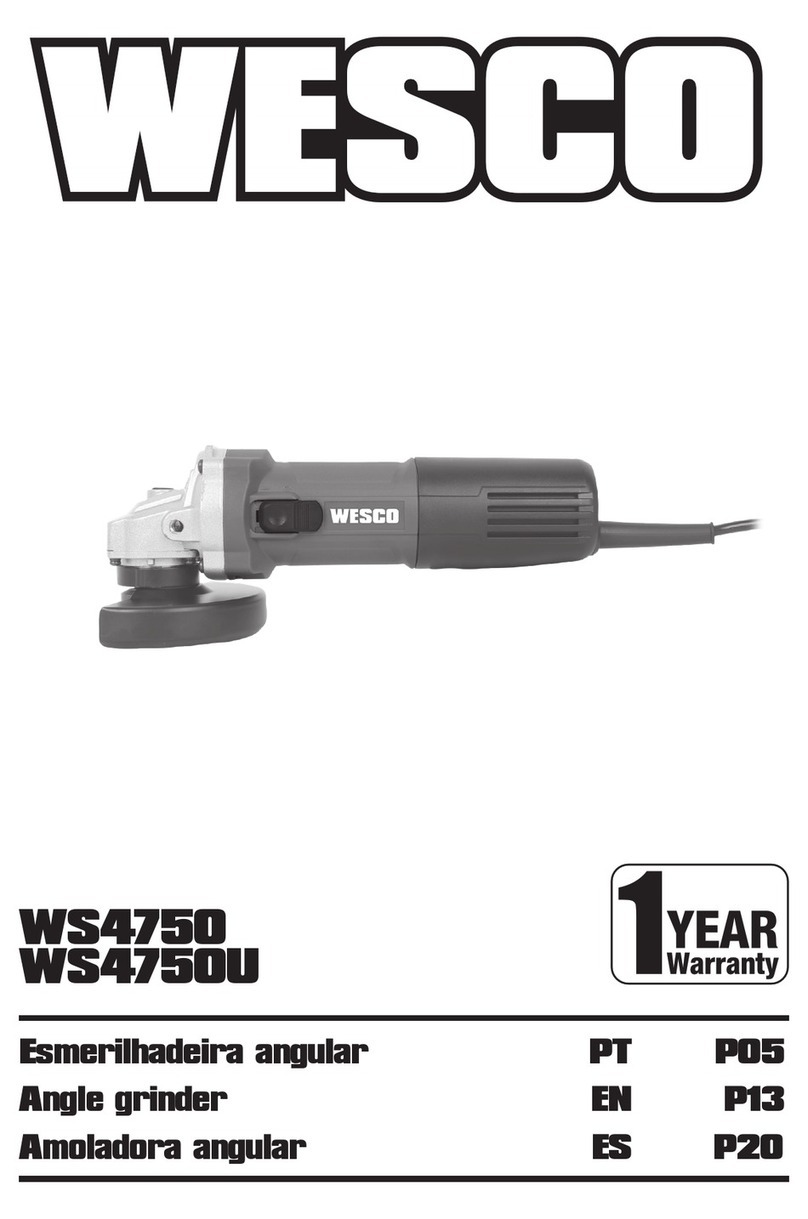
9
PT
deve ser pelo menos igual à velocidade
máxima marcada na ferramenta elétrica.
Acessórios funcionando a uma velocidade acima
da velocidade nominal podem quebrar e serem
arremessados.
e) O diâmetro externo e a espessura de
seu acessório devem estar dentro da
capacidade nominal de sua ferramenta
elétrica. Acessórios dimensionados incorretamente
não podem ser protegidos ou controlados de forma
adequada.
f) A dimensão do alojamento dos rebolos,
flanges, discos de apoio ou qualquer
outro acessório deve ser compatível
com o eixo da ferramenta elétrica.
Acessórios com furos de alojamento incompatíveis
com a montagem física da ferramenta elétrica girarão
desbalanceados, vibrarão excessivamente e poderão
causar perda de controle.
g) Não use um acessório danificado. Antes
de cada uso, inspecione o acessório,
como lascas e trincas em rebolos
abrasivos, trincas, rasgos ou desgaste
excessivo em discos de apoio, fios
soltos ou trincados em escovas de aço.
Se a ferramenta elétrica ou o acessório
sofrer uma queda, inspecione se há
danos ou instale um acessório não
danificado. Após inspecionar e instalar
um acessório, posicione-se, e também
os espectadores, distantes do plano do
acessório rotativo e opere a ferramenta
elétrica na velocidade máxima sem
carga por um minuto. Acessórios danificados
geralmente quebrarão durante esse tempo de teste.
h) Use equipamento de proteção pessoal.
Dependendo do trabalho, use protetor
facial, luvas de segurança ou óculos
de segurança. Conforme apropriado,
use máscara contra pó, protetores
auriculares, luvas e avental de proteção
capazes de bloquear pequenos
fragmentos abrasivos ou da peça de
trabalho. O protetor ocular deve ser capaz de
bloquear fragmentos arremessados gerados por
várias operações. A máscara contra pó ou respirador
deve ser capaz de filtrar partículas geradas por sua
operação. Exposição prolongada a altos níveis de ruído
pode causar perda auditiva.
i) Mantenha espectadores a uma distância
segura da área de trabalho. Qualquer
pessoa que entre na área de trabalho
deve usar equipamento de proteção
individual. Fragmentos da peça de trabalho ou de
um acessório quebrado podem ser arremessados e
causar lesão além da área de operação imediata.
j) Segure a ferramenta elétrica somente
pelas superfícies isoladas da
empunhadura ao executar uma operação
em que o acessório de corte pode entrar
em contato com fiação oculta ou seu
próprio cabo. O acessório de corte que entrar em
contato com um fio energizado pode fazer com que
as partes metálicas expostas da ferramenta metálica
fiquem energizadas, o que poderia provocar um
choque elétrico no operador.
k) Posicione o cabo afastado do acessório
giratório. Se você perder controle, o cabo pode ser
cortado ou enroscado e sua mão ou braço pode ser
puxado em direção ao acessório giratório.
l) Nunca repouse a ferramenta elétrica
até o acessório parar completamente. O
acessório giratório pode agarrar a superfície e causar a
perda de controle da ferramenta elétrica.
m) Não opere a ferramenta enquanto estiver
transportando-a a seu lado. O contato
acidental com o acessório giratório pode enroscar suas
roupas, puxando o acessório em direção a seu corpo.
n) Limpe regularmente as ventilações de
ar da ferramenta elétrica. A ventoinha do
motor levará pós para dentro da carcaça e o acúmulo
excessivo de pó metálico pode causar riscos elétricos.
o) Não opere a ferramenta elétrica próxima
a materiais inflamáveis. Faíscas podem
incendiar esses materiais.
p) Não use acessórios que requeiram
líquidos para resfriamento. O uso de água
ou outro liquido para resfriamento pode resultar em
eletrocussão ou choque.
q) Sua mão deve segurar a empunhadura
quando você estiver trabalhando. Sempre
use as empunhaduras auxiliares fornecidas com a
ferramenta. A perda de controle pode causar lesão
pessoal.
INSTRUÇÕES DE SEGURANÇA ADICIONAIS
PARA TODAS AS OPERAÇÕES
RICOCHETE E AVISOS RELACIONADOS
O ricochete é uma reação repentina à compressão ou
travamento de um rebolo rotativo, disco de apoio, escova
ou qualquer outro acessório. A compressão ou travamento
causa uma parada brusca do acessório rotativo, que, por
sua vez, força a ferramenta elétrica descontrolada
na direção oposta da rotação do acessório no ponto do

































